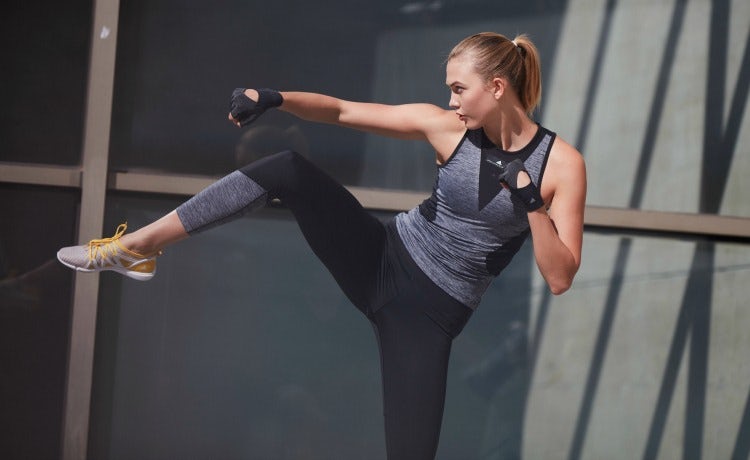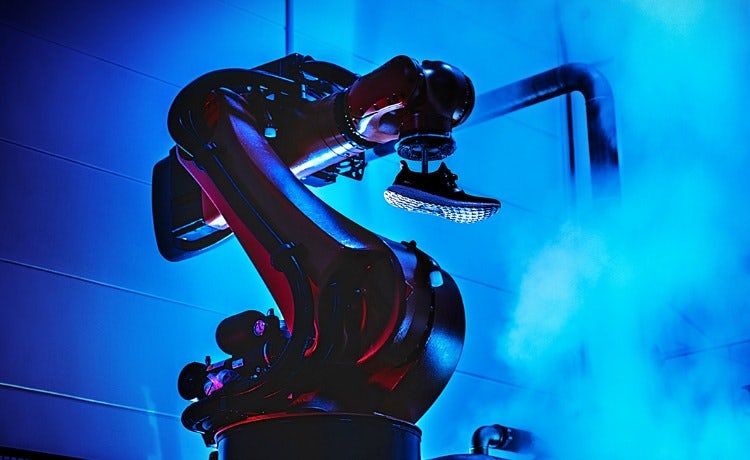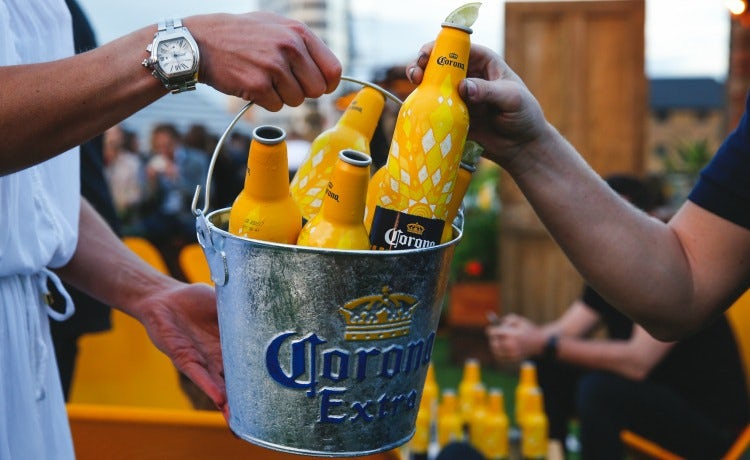Which brands are winning the global head-to-heads?
Second-placed brands are giving the market leaders across a number of categories a run for their money by focusing on creativity, humour and digital innovation.

Being the major player in a sector is no longer a guarantee of long-term success. It’s not always new entrants to the market that brands should be wary of, however.
Being the second-placed brand in any given category often gives businesses room to experiment and innovate in a way that might be difficult for the market leader.
And although they are of course growing from a smaller base, it is the challengers in terms of market share – brands such as Adidas and Burger King – that are growing at the fastest rate, according to Kantar Millward Brown’s latest BrandZ ranking.
Adidas’s brand value shot up 58% in 2017 compared to Nike’s which dropped 9%, for example, while Burger King’s grew 39% next to a 10% rise for McDonald’s.
While the market leaders sometimes feel the pressure of being the one to beat, these faster growing second-placed brands enjoy the freedom to exploit any gaps they see in the market.
Here Marketing Week profiles six of the fastest growing brands of 2017, looking at the steps they have taken to accelerate their growth and what threat they might pose to their competitors as a result. Click on the brand to read more – Burger King, Adidas, Samsung, Corona, DHL and one to watch Tim Hortons
Burger King

The war of the fast food giants rages on, but it was Burger King that grew at a faster rate in 2017 compared to rival McDonald’s.
While in pure value terms McDonald’s wins the battle hands down, having increased its brand value by 10% to $97.7bn (£74.5bn), BrandZ data shows Burger King grew its brand by almost four times as much (39%) to $5.1bn (£3.9bn).
Burger King was also named Cannes Lions Creative Marketer of the Year 2017 in recognition of the its reputation for creating “bold, courageous and innovative” marketing campaigns.
READ MORE: Burger King – Galvanising the whole business around an idea is the only way to ensure it isn’t vanilla
Vice-president of marketing at Burger King UK, Renato Rossi, says there are three reasons why he believes the fast food chain has been able to grow its brand – a strengthening of its brand positioning, commitment to offering convenient on-demand experiences and the ability to grow its physical footprint.
“We are so much smaller than our main competitor, so we are underpenetrated, especially outside the US, and therefore have much bigger room to grow,” says Rossi.
Being a smaller player with a lower budget encourages Burger King to take risks in order to create campaigns that get on consumers’ radars, he explains.
We are so much smaller than our main competitor, so we are underpenetrated, especially outside the US, and therefore have much bigger room to grow.
Renato Rossi, Burger King
“We don’t have the same budget to invest as our competitors, so every day it’s about making sure that every campaign is aligned to the brand positioning and has the potential to be noticed,” he adds.
A standout is the 2016 Cannes Grand Prix award winning McWhopper campaign, where Burger King invited McDonald’s to partner up on a new burger in honour of World Peace Day – an invitation its rival rejected.

Rossi likens the audacity of the McWhopper campaign to Pepsi and Coca-Cola teaming up in the drinks market. He believes McWhopper gained so much attention because it was an idea no one had tried before and revealed more about the fun Burger King personality.
TV still rules the Burger King media mix in terms of reach and relevance, in particular for more promotional focused messages about the value of the product. The visibility offered by outdoor advertising comes second, prized for its ability to drive traffic into Burger King restaurants. Digital channels are chosen to create impact around the brand’s biggest global brand positioning campaigns.
“When we portray our brand personality it all comes via digital channels, which are all globally articulated and we try to generate as much impact as possible. So our big global campaigns are mainly taken care of by digital and PR, and then our promotional messages are delivered through TV and out of home,” Rossi explains.
While Burger King was winning accolades for its marketing, rival McDonald’s found itself in the firing line. In May the fast food giant was slammed for “inappropriately and insensitively using bereavement and grief to sell fast food” after an advert aired in the UK showing a young boy trying to find common ground with his dead father over a Filet-O-Fish.
READ MORE: McDonald’s pulls ‘dead dad’ ad after string of complaints
The fast food giant pulled the advert just four days later, reiterating that the company had no intention of causing any upset and that it would review its creative process to “ensure this situation never occurs again”.
Adidas

Adidas claimed the coveted top spot in BrandZ’s list of the fastest growing brands of 2017, notching up an enviable 58% surge in brand value to $8.3bn (£6.3bn). US sportswear heavyweight Nike, meanwhile, despite having a significantly higher brand value of $34.2bn (£26.1bn), suffered a 9% fall in growth over the same period.
The ranking reflects a 16% surge in Adidas’ sales during the three months to the end of March, combined with a 30% increase in net profits to €455m (£385m).
The German sportswear giant credited a major marketing push for helping the brand sink its teeth into the North American market, where Adidas enjoyed a 31% increase in sales during the three months to the end of March. During the same period Nike was only able to notch up 3% sales growth.
This trend was mirrored in Greater China where Adidas saw sales surge 31%, double the 15% growth posted by Nike. Off the back of this performance, Adidas expects sales in 2017 to increase 12-13%, fuelled by double-digit growth in Western Europe, the US and Greater China.
The sports brand’s digital-first marketing strategy appears to be paying off, with Adidas notching up 53% growth in online sales during the three months to March. Speaking in September 2016, Adidas global head of digital ecosystem design, David Greenfield, stated that digital would be key to winning dominance in the North American market. He cited the marketing activity around the launch of Adidas’ NMD trainer, which was 100% focused on social media.
“It wasn’t a 30-second TV spot or some slogan, but a digital-only strategy that made us sell out of those shoes in a matter of hours,” said Greenfield.
Adidas further cemented its interest in social media with the launch last year of Tango Squads, communities of hyper-connected 16 to 19-year-old football obsessives located in 15 key cities, operating directly on messaging apps Facebook Messenger, WhatsApp and Line.
READ MORE: Adidas on redefining influencer marketing through dark social
Alongside its focus on digital, over the past year Adidas ramped up its speed to market. By 2020, the sportswear brand wants half of its sales to be “speed enabled” products, which have speed-to-market thinking applied from sourcing to arrival in store.
Nike, on the other hand, embarked on a recent restructure for far less positive reasons. In June the US sportswear giant announced in was cutting 2% of its global workforce, approximately 1,400 jobs, in a bid to streamline its organisational structure. This coincides with Nike’s decision to consolidate its product ranges, slashing the number of styles it produces by 25%.
In order to drive digital growth Nike has restructured to focus on consumers in 12 key cities including New York, London, LA and Shanghai, which Nike believes will represent over 80% of its growth by 2020.
Samsung

Samsung bounced back with aplomb from 2016’s disastrous Galaxy Note 7 product recall scandal with a 72% surge in profits to £9.3bn. Strong sales of the Galaxy S8 smartphone drove an 18% increase in Samsung’s sales to £41.4bn during the three months to June.
According to the BrandZ ranking, Samsung’s brand value rose 23% to $24bn (£18.3bn) over the past year. This means that while Samsung is dwarfed by rival Apple’s $234.8bn (£179.1bn) brand valuation, the Californian tech giant only managed to grow its brand by 3% over the past 12 months.
Samsung Electronics UK vice-president of corporate marketing, Russell Taylor, says the business was keen to learn from the Note 7 debacle, while at the same time openly admitting fault.
“It was incredibly important that we took full responsibility, identified what happened and put in place every possible measure to ensure it didn’t happen again,” he explains.
READ MORE: Samsung on why it chose to take risks and ‘fight complacency’ during its phone crisis
“We also realised we had a job to do to communicate the steps we had taken and to win back the trust of consumers in the UK and so we’ve invested heavily in providing that reassurance. Our brand measurement scores seem to suggest this approach has worked, but we know this is an ongoing process.”
As part of the fight back Samsung invested heavily in above-the-line activity, topping the list of TV advertisers by airtime in the UK in March, the same month it launched its Galaxy 8 model. Samsung went big with an integrated campaign spanning nationwide outdoor advertising, a Tower Bridge light show broadcast on TV and a live 360-degree gig with British indie band Royal Blood.
Taylor believes Samsung has got better at connecting “head and heart”, which is helping the brand stand out compared to its global rivals.
“We are now doing more in the areas of consumer passions – such as festivals and sport – and playing a real and authentic role in improving those experiences using our technology,” says Taylor.
“We have also invested in brand-led campaigns. This year, the Ostrich spot has been particularly popular. It was an excellent way of articulating our brand position – ‘meaningful progress’ – in a way that resonated successfully with consumers.”
https://www.youtube.com/watch?v=hjKd24UCPYY
While the launch of the Galaxy 8 created a noticeable buzz among consumers, the reception to the release of the iPhone 7 in September was far more muted. Consumers appeared underwhelmed, prepared to wait for the unveiling of Apple’s 10th anniversary iPhone – the iPhone 8 – rumoured to be later this year.
Shoppers were also slow to warm to some of the iPhone 7’s updates, such as the abandonment of conventional headphone sockets in favour of wireless Airpod earphones. Released in May, Apple’s second quarter results show a 1% dip in iPhone sales, down to 50.8 million units, just shy of the expected 51.4 million mark.
Corona

Both part of the AB InBev stable, Corona outpaced Budweiser in terms of growth, as its brand value rose 23% to $8.1bn (£6.2bn) in the BrandZ ranking. In comparison Budweiser, by far the larger player, saw its brand value rise 3% to $27.1bn (£20.7bn).
Over the past 12 months Corona has tapped into growth in the premium and world lager categories, as well as working on amplifying its brand identity. To support its ‘This is Living’ global brand campaign, Corona invested in a multi-platform outdoor campaign featuring 1,000 national roadside posters, 100 out-of-home sites across the London Underground and large digital format roadside adverts across London and Manchester.
Marketing manager for Corona UK, Aina Fuller, explains that the brand has invested significantly in the ‘This is Living’ campaign over the summer months through social media, out-of-home, cinema advertising and point-of-sale promotions.
“We have amplified brand identity and story this year through a series of high impact campaigns and activations that are clearly having a positive effect on growth. We have also seen an increase in the number of consumers craving a ‘unique’ experience and wanting to be part of something different,” says Fuller.
Corona has also used its relationships with UK festivals like Lovebox and Citadel to drive brand visibility, as well as staging its own event – Corona SunSets Festival – in Greenwich in July. In the same month the brand launched ‘Passport to Paradise’, a pan-European integrated campaign offering consumers the chance to win a trip to Italy, Dubai, Cape Town or Colombia.
DHL
Global fashion icons? DHL Express CEO, Ken Allen, tried out the Vetements t-shirt. Who wore it best? #DHLVetements pic.twitter.com/j1Gl8rdDaC
— DHL Africa (@DHLAfrica) March 17, 2016
The US-based UPS business dominates the global logistics landscape in brand value terms, with a valuation of $58.3bn (£44.5bn) having grown 17%, according to BrandZ data. However, in growth terms German logistics rival DHL takes the prize having increased its brand value by 20% to $15.8bn (£12.1bn).
According to Arjan Sissing, DHL senior vice-president of corporate brand marketing, this success is the result of being customer-centric and bonding with its audiences.
“All 510,000 our colleagues are treated as brand ambassadors and marketers, who know they need to contribute to build excellent brand experiences for our customers,” says Sissing.
READ MORE: Is improving staff wellbeing the secret to brand health?
“On a product and service level we have a market-by-market approach. Our group is built up on specific business units and they approach their different markets with appropriate strategies and products.”
DHL uses partnerships with the likes of Formula 1, Formula E and football teams like Bayern Munich and Manchester United to maintain relevancy and trigger more of an emotional connection with its customers.
The logistics giant also benefited greatly from the buzz generated on social media by the inclusion of a DHL branded T-shirt in the spring/summer 2016 collection from luxury Parisian design collective, Vetements.
The T-shirt created what Sissing describes as a “nice piece of social viral activity”, which CEO of DHL Express, Ken Allen, capitalised on by posing in his own original DHL company T-shirt.
“It created a nice echo on social media. So we hit the right spot and with a bit of luck it was picked up,” says Sissing. The collaboration continues, with DHL teaming up with Vetements on a 10 item capsule collection for the fashion house’s spring/summer 2018 collection.
One to watch: Tim Hortons

Canadian coffee chain Tim Hortons made its European debut in the UK with the opening of its first outlet in Glasgow in May.
Named after Canadian hockey legend of the same name, Tim Hortons is a household name in its domestic market, where it accounts for eight out of every 10 cups of coffee sold.
Strong consumer demand in its home market, combined with an expansion strategy expected to roll out to new UK city centre locations in the coming year, has helped Tim Hortons grow its brand value by 26% over the past year, according to BrandZ.
While Tim Horton’s $5.9bn (£4.5bn) valuation is dwarfed by coffee shop rival Starbucks’ $44.2bn (£33.9bn) in brand value terms, the BrandZ figures show the US mega-chain could only manage grow 2% in the past 12 months.
Matthew Bresnahan, Tim Hortons senior director of marketing, explains the chain is always looking for new ways to connect with consumer, whether through the menu or overall experience.
“We work very closely with our agencies to educate them on where we see the brand going – a good brief and strategy from the start is how we find great creative ideas that help us promote our brand,” says Bresnahan.
Tim Hortons has tailored its menu to the UK market with the inclusion of chai latte, flat white and brioche breakfast sandwiches. Back in Canada, the chain has seen latte and espresso sales volumes more than double following the launch of its new espresso campaign in April.
According to Forbes, Tim Hortons is the most valuable element of the Restaurant Brands International portfolio, which also includes Burger King.







